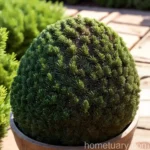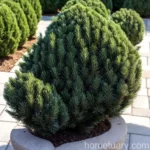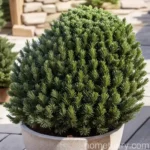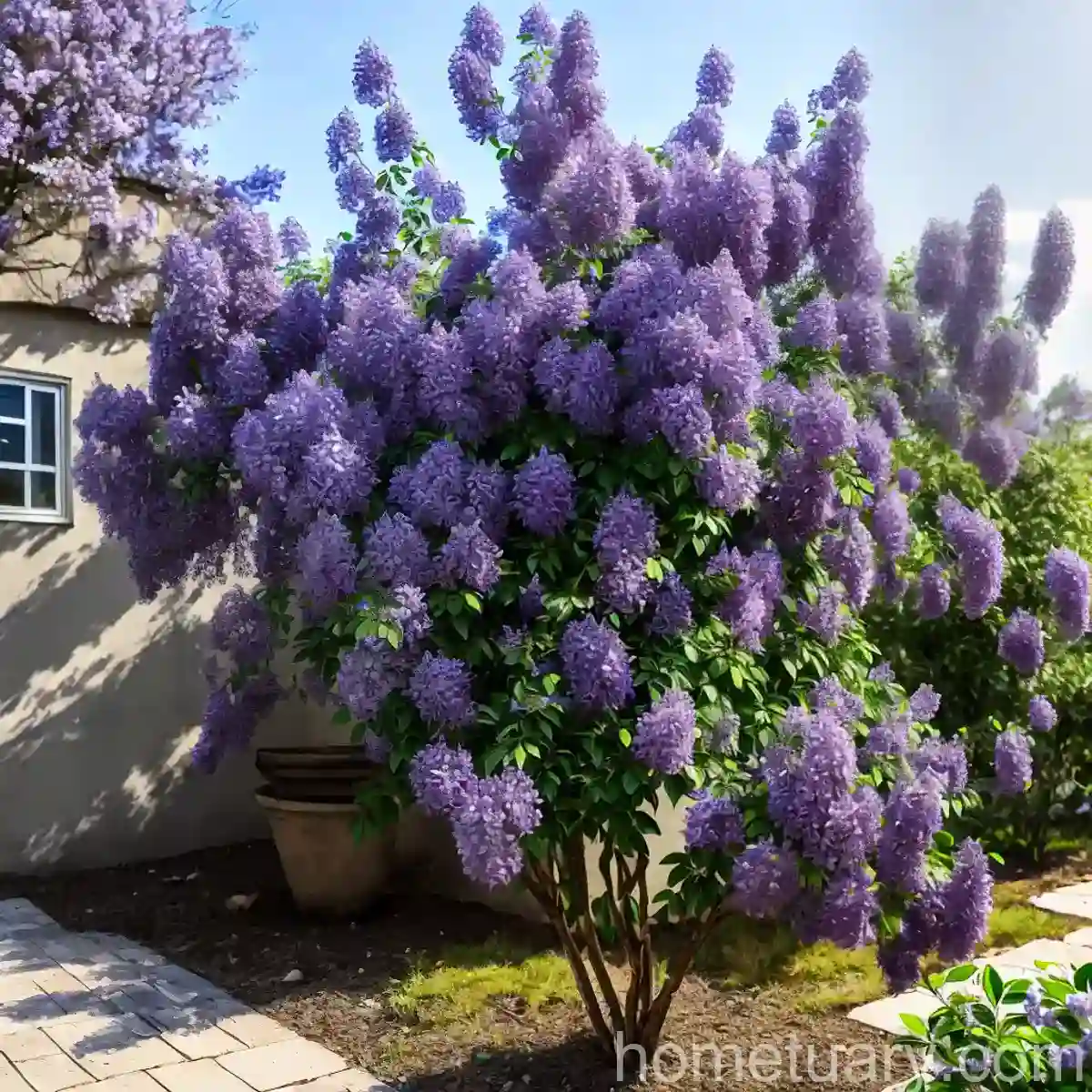Norway Spruce (Picea abies): A Comprehensive Guide
Norway spruce, scientifically known as Picea abies, is a majestic evergreen conifer that is native to Northern, Central, and Eastern Europe. This iconic tree species holds significant cultural, ecological, and economic importance, both in its natural habitat and as an ornamental and timber resource worldwide. In this comprehensive guide, we will delve deep into the various aspects of this remarkable tree, including its characteristics, cultivation, uses, care, and much more.
What is Norway Spruce (Picea abies)?
Norway spruce, scientifically referred to as Picea abies, is a large, stately coniferous tree belonging to the Pinaceae family. It is known for its tall, straight trunk, pyramidal crown, and graceful drooping branches, making it a popular choice for ornamental and forestry purposes. This species is recognized for its adaptability to various climates and soil types, making it a favorable choice for reforestation and landscaping projects.
The name “Norway spruce” is somewhat misleading, as it does not originate from Norway but rather from the mountainous regions of Central and Eastern Europe. Despite this, the species has become closely associated with Norway due to its extensive cultivation and economic significance in the country.
Scientific Classification:
– Family: Pinaceae
– Genus: Picea
– Species: Picea abies
Key Takeaways – Norway spruce (Picea abies)
Before delving into the specifics of growing and caring for Norway spruce, let’s take a look at some key takeaways and characteristics of this esteemed tree species.
- Common Names: Norway spruce, European spruce
- Scientific Name: Picea abies
- Native Habitat: Central and Eastern Europe
- Growth Habit: Tall, conical form with drooping branches
- Leaves: Needle-like, dark green, four-sided, and approximately 12-24 mm long
- Cones: Cylindrical, pendent, and often with a distinctive reddish-brown hue
- Uses: Ornamental planting, timber production, reforestation, windbreaks
- Adaptability: Tolerant to various soil types and climates, including cold and windy conditions
- Commercial Importance: Valued for timber, pulpwood, and as a source of essential oils
With these key takeaways in mind, let’s explore the various aspects of cultivating, caring for, and utilizing Norway spruce in more detail.
Culture
Cultivating Norway spruce involves understanding its specific cultural requirements to ensure optimal growth and development. From soil conditions to climate preferences, the cultural aspects play a crucial role in the successful establishment of this iconic tree species.
Uses
The Norway spruce is a versatile species with a wide range of uses, both from a practical and ornamental perspective. Let’s explore the various applications of this esteemed tree:
- Ornamental Planting: Norway spruce is widely planted for its commanding presence and is often used as a specimen tree in parks, gardens, and large landscapes. Its elegant form and year-round foliage make it an excellent choice for adding structure and visual interest to outdoor spaces.
- Timber Production: One of the most economically significant uses of Norway spruce is its timber. The wood is prized for its straight grain, resilience, and versatility, making it a valuable resource for construction, furniture making, and paper production.
- Reforestation: Due to its adaptability, Norway spruce is utilized in reforestation efforts, particularly in regions with challenging environmental conditions. It plays a crucial role in stabilizing soil, enhancing biodiversity, and maintaining ecological balance.
- Windbreaks: The dense foliage and sturdy growth habit of Norway spruce make it an ideal choice for creating windbreaks and shelterbelts. Its ability to withstand harsh winds and provide protection to surrounding areas is highly valued in agricultural and horticultural settings.
Water
Norway spruce thrives in well-drained soil and typically requires moderate watering, especially during its initial establishment phase. Once established, it exhibits good drought tolerance, but regular watering during prolonged dry spells can help maintain its vigor and health.
Sunlight
While Norway spruce is tolerant of partial shade, it prefers full sunlight for optimal growth and development. When planted in shaded locations, it may exhibit reduced vigor and density, affecting its overall aesthetic and performance.
Fertilizer
Proper fertilization can contribute to the health and vitality of Norway spruce. A balanced, slow-release fertilizer applied in early spring can provide the necessary nutrients for robust growth and foliage development. However, it’s important to avoid excessive fertilization, as it can lead to nutrient imbalances and potential damage to the tree.
Soil
Norway spruce thrives in well-drained, acidic soils with good fertility. It performs best in soil with a pH range of 4.5 to 6.0. Additionally, the soil should be rich in organic matter and should not be prone to waterlogging, as this can lead to root rot and other moisture-related issues.
Pruning
Pruning is generally minimal for Norway spruce, especially when used in natural or forest settings. However, for ornamental plantings, occasional pruning to shape the tree and remove dead or damaged branches may be necessary. It’s important to prune with care, as excessive or improper pruning can compromise the tree’s natural form and health.
Propagation
Norway spruce can be propagated through various methods, including seed propagation and grafting. Seed propagation is commonly used for large-scale reforestation projects, while grafting is employed to maintain specific characteristics or create new cultivars.
Container Popularity
While Norway spruce is predominantly known for its role in large-scale landscapes and forestry, it is also popular as a container plant in the realm of ornamental horticulture. When grown in containers, it can be used to adorn patios, terraces, and small gardens, adding a touch of evergreen elegance to confined spaces.
Container Common Diseases
When grown in containers, Norway spruce may be susceptible to certain diseases, including root rot, needle cast, and canker diseases. Proper cultural practices, such as ensuring well-drained soil and adequate air circulation, can help mitigate the risk of diseases in container-grown specimens.
Disease Diagnosis
Diagnosing diseases in Norway spruce involves careful observation of foliage, bark, and overall tree health. Common signs of diseases include discoloration, wilting, premature needle drop, and unusual growths. Consulting with a plant health specialist or arborist can aid in accurate disease diagnosis and appropriate management strategies.
Common Pests
Norway spruce is vulnerable to several pests, including aphids, spider mites, and adelgids. Regular monitoring for pest infestations, along with the implementation of integrated pest management practices, can help control pest populations and minimize potential damage to the trees.
Botanist’s Tips
As a plant scientist with a profound understanding of Norway spruce, I have compiled a set of valuable tips to assist gardeners, arborists, and enthusiasts in effectively growing and caring for this remarkable tree species:
- Site Selection: When choosing a location for planting Norway spruce, prioritize well-drained, acidic soil and ample sunlight exposure. Avoid areas prone to waterlogging or excessive shade.
- Mulching: Apply a layer of organic mulch around the base of young Norway spruce trees to conserve soil moisture, suppress weed growth, and provide a steady supply of organic matter as the mulch decomposes.
- Watering: During the establishment phase, ensure consistent moisture for young trees to encourage healthy root development. Once established, practice deep, infrequent watering to promote deep root growth and drought tolerance.
- Pruning: Limit excessive pruning and focus on the removal of dead, damaged, or diseased branches. Avoid heavy pruning that alters the natural form of the tree.
- Integrated Pest Management: Monitor for common pests and employ a combination of cultural, biological, and, if necessary, chemical control methods to manage pest populations effectively.
- Disease Prevention: Emphasize good cultural practices, such as proper watering and soil management, to prevent the onset and spread of diseases. Monitor trees regularly for any signs of disease and take prompt action if symptoms are observed.
By adhering to these botanist’s tips, individuals can enhance the vitality and longevity of Norway spruce in various settings, ranging from private gardens to commercial forest plantations.
Fun Facts
As we unravel the fascinating world of Norway spruce, let’s delve into some captivating and lesser-known facts about this magnificent tree species:
- Christmas Tree Tradition: Norway spruce has a long-standing association with the Christmas tree tradition. In fact, the first recorded use of a Norway spruce as a Christmas tree dates back to the 16th century in the town of Tallinn, Estonia.
- Medicinal Properties: Various parts of the Norway spruce, including the resin and buds, have been historically utilized in folk medicine for their purported healing properties. The resin has been used in traditional remedies for respiratory ailments and skin conditions.
- Wildlife Habitat: The dense foliage of Norway spruce provides valuable habitat for a diverse array of wildlife, including birds, small mammals, and insects. It offers shelter, nesting sites, and food sources, contributing to local biodiversity.
- Environmental Benefits: Norway spruce plays a crucial role in carbon sequestration and oxygen production, contributing to the mitigation of climate change and the enhancement of air quality.
- Essential Oil Production: The needles and twigs of Norway spruce are a source of essential oil, which is used in aromatherapy, fragrance production, and traditional medicine.
These fun facts add depth to the allure of the Norway spruce and highlight its multifaceted contributions to culture, ecology, and human well-being.
Links to External Resources
For readers seeking additional information and resources related to Norway spruce, I have curated a selection of valuable external links offering comprehensive insights into the cultivation, care, and uses of this iconic tree species:
- Royal Horticultural Society – Picea abies (Norway Spruce)
- USDA Forest Service – Norway Spruce
- The Spruce – How to Grow and Care for Norway Spruce Trees
- American Conifer Society – Picea abies
- European Forest Genetic Resources Programme – Norway spruce (Picea abies)
- University of Florida IFAS Extension – Norway Spruce
These external resources offer a wealth of information on the botany, ecology, and horticultural aspects of Norway spruce, providing readers with in-depth knowledge and practical guidelines for successful cultivation and management.
In conclusion, Norway spruce (Picea abies) stands as a timeless emblem of strength, resilience, and natural splendor. Whether gracing expansive forests, adorning urban landscapes, or fulfilling diverse commercial roles, this iconic tree species continues to captivate our imagination and inspire our stewardship of the natural world. By understanding its characteristics, cultural requirements, and manifold uses, we can foster a deeper appreciation for the enduring legacy of the Norway spruce and its enduring relevance in the tapestry of human existence.















